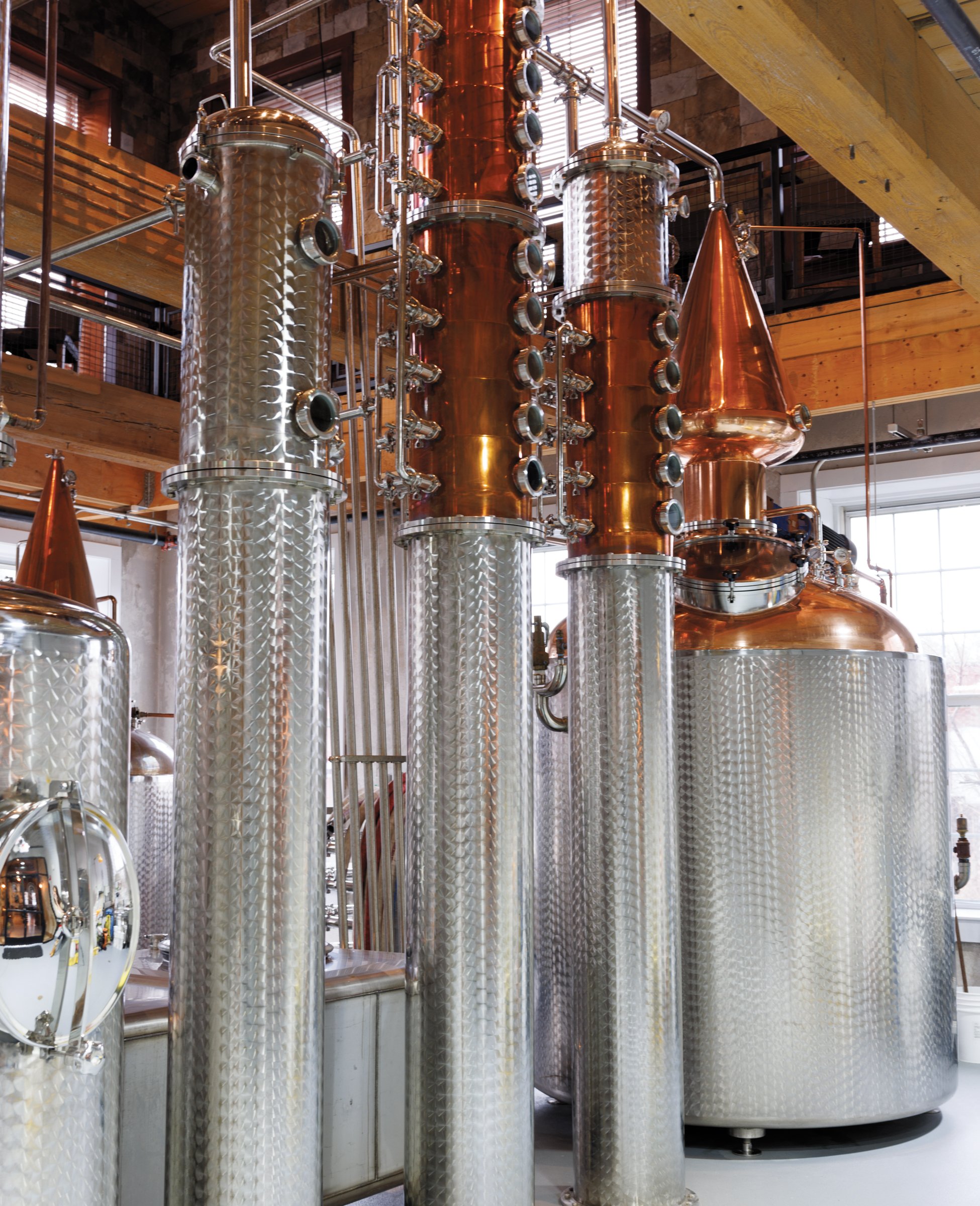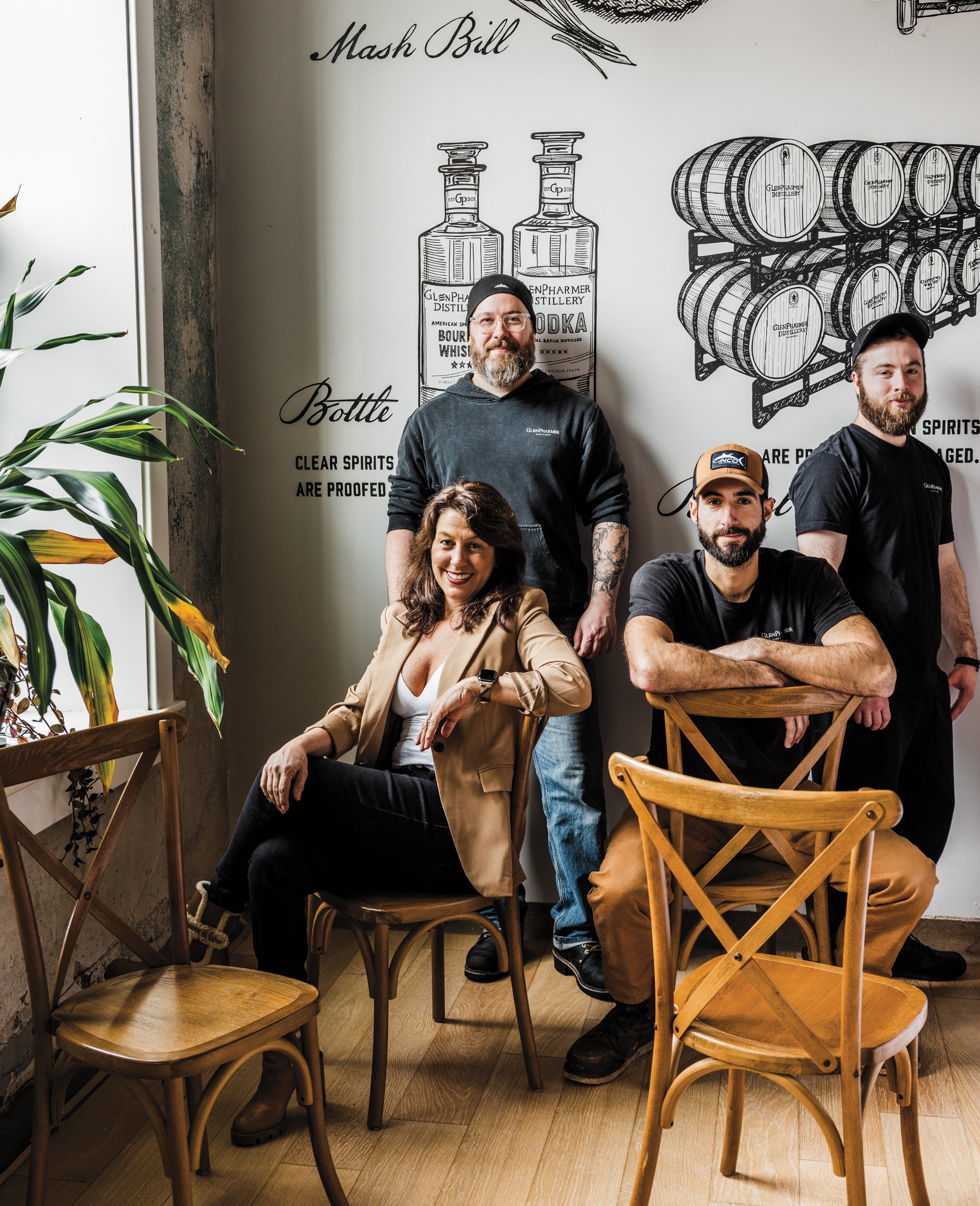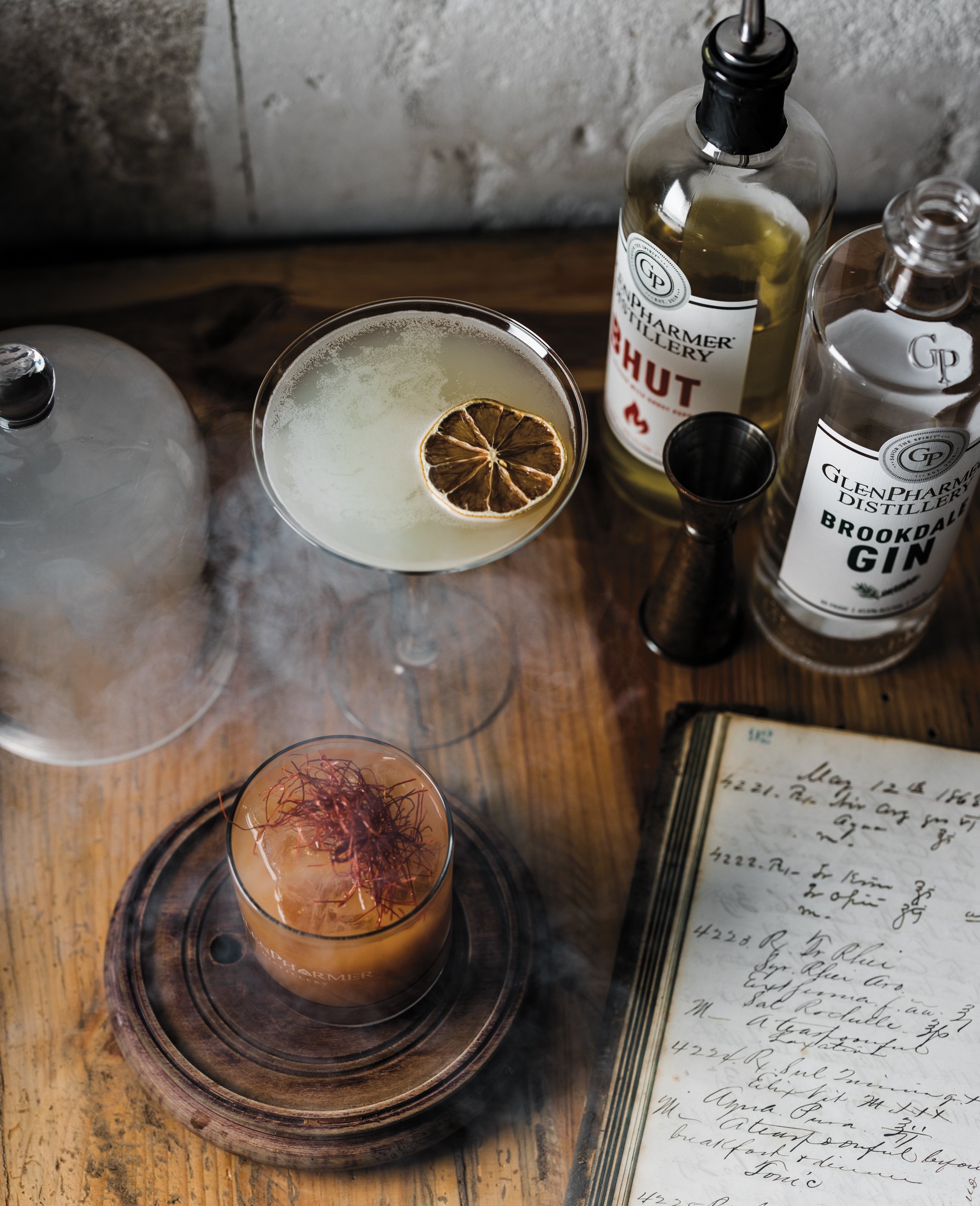Edible Food Find: GlenPharmer Distillery
Photos by Michael Piazza
GlenPharmer Distillery operates their grain-to-glass distillery out of a renovated former textile mill in a glen along Franklin’s Mine Brook. Co-owners Beth and Pat Downing explain that they are a “farmer distillery,” a license category created post-Prohibition to encourage domestic agriculture. Switching out the “f” in farmer for “ph” in the distillery’s name is a nod to the couple’s other careers: Beth is a retired pharmacist and Pat runs a pharmacy services company.
After years of talking about starting a spirits business, they explored the idea seriously after Pat attended Kentucky’s Moonshine University. They found space, continued learning and pursued complex regulatory approval from federal, state and local governments. They received a Certificate of Occupancy right before the Covid state of emergency was declared. As an essential business they were allowed to run the distillery and soon opened a planned on-site restaurant (and later an event space), pivoting with each rule change for dining establishments.
“The farmer distiller license means we can serve and sell on site only our own spirits and sell to bars, liquor stores and restaurants,” the Downings note. “Our thinking was that if we do the restaurant well, we (as the restaurant) would be our own first customer for our distilled spirits. We see the restaurant as a tasting room, an extension of the distillery.”
Their challenge was to fit everything within the granite building’s confines. Equipment decisions were made based on what the building could handle and with growth in mind. “It’s kind of a catch-22, because if you make your product well and people want it, your equipment can only produce so much,” Pat explains. “We decided up front that we would get our equipment as large as possible so that we have a large production capacity. We do everything here other than mill our own grains.”
The distillation process begins when milled grains are mixed into a mash bill and placed with water into an 800 gallon mash tun, creating a wort. The wort is transferred with yeast to one of five fermenters where the sugars convert into alcohol. The ferment then moves into a 500 or 800 gallon still, where alcohols are distilled and separated into heads, hearts and tails. Attached to the stills are columns, giving them the flexibility to produce other spirits. Next to the larger still, for example, are a hybrid column, a vodka column and a gin basket. Pat notes that the distillers can route alcohol vapors through different equipment depending on what they’re making and what they want to achieve. Clear spirits are bottled on site. Brown spirits are sent to one of nearly 200 barrels lining GlenPharmer’s basement for aging, with some designated for their private barrel program.
GlenPharmer now sells nine spirits. Many have competed in spirits competitions, including the most prestigious of all, the San Francisco World Spirits Competition. Most have won double gold or gold medals. In 2023, their Reserved Spiced Rum received the only double gold medal that the SFWSC awarded to a flavored rum in the world. Bhut (ghost pepper vodka) is their most awarded spirit, named as best in the flavored vodka category in 2022. Brookdale Gin has 11 botanicals, including foraged Eastern White Pine needles. “They are very potent,” Pat says, “so we literally count them, even in an 800 gallon batch.” Bean (vodka with espresso and vanilla bean) and Bog (cranberry vodka) are their first- and second-best-selling spirits, respectively. Glenquila is made with Mexican agave and yeast. Bourbon and rye are only sold at the distillery as they continue to age. Wheat distilled vodka rounds out the lineup.
“Our goal,” Pat says, is “to keep producing quality spirits and make them more widely available while continuing to create interesting experiences for people who come to the distillery.”
glenpharmer.com
860 West Central Street, Franklin
This story appeared in the Spring 2024 issue.



